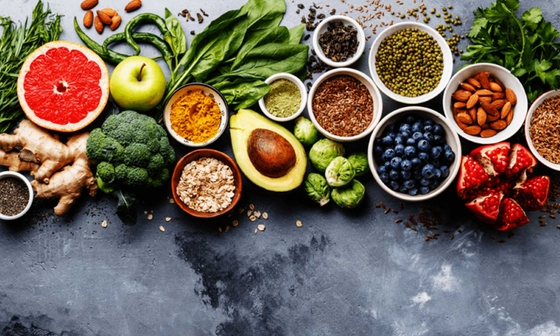
New diet recommendations matter to your heart
Heart-healthy eating is not about one specific food or nutrient; it’s about regularly eating a variety of healthy foods over time.
Key takeaways
1 min read
- Plant foods should make up most of your plate; be sure to include lots of vegetables, fruits and wholegrain cereals, as well as legumes (chickpeas, beans and lentils)
- Fish and seafood are also great choices
- You can add smaller servings of other animal-based products, such as milk, cheese, yoghurt, eggs, poultry and lean meat
Go online, read a magazine, flick through your Instagram feed, and you might find the latest advice covering healthy eating, superfoods or celebrity diets. So, how do you make sense of it all, especially if you want to eat well for your heart?
For example, how much red meat can you eat, are eggs in or out, what about diary, and is butter OK?
The Heart Foundation has just reviewed the latest evidence covering how certain foods impact heart disease risk, and we have tweaked some of our recommendations.
Our key message is that heart-healthy eating is not about one specific food or nutrient; it’s about regularly eating a variety of healthy foods over time.
What does heart-healthy eating look like
- Plant foods should make up most of your plate; be sure to include lots of vegetables, fruits and wholegrain cereals, as well as legumes (chickpeas, beans and lentils)
- Fish and seafood are also great choices
- You can add smaller servings of other animal-based products, such as milk, cheese, yoghurt, eggs, poultry and lean meat
This way of eating is naturally low in saturated fat, added sugars and salt but high in fibre, vitamins and minerals. Make sure to keep junk foods and take-aways to a minimum and cook at home more often.
Meat
Many of us love a great steak, but eating too much red meat increases your risk of heart disease and your waistline.
How much meat should you eat?
The link between red meat and cardiovascular disease (leading to a narrowing or blockage of blood vessels and can lead to a heart attack or stroke) means you should limit the amount of red meat you eat.
Across your week you should eat less than 350g of unprocessed red meat (such as beef, pork or lamb)
This means you can have about 1-3 red meat-based meals each week, but eat this together with vegetables, wholegrains and healthy cooking oils (see below).
While you can eat some red meat, you should try to avoid sausages and salamis. Eating processed meats is associated with an increased risk of heart disease and other health conditions.
Eating poultry doesn’t seem to increase or decrease your risk of heart disease; it can be enjoyed as part of a heart-healthy diet.
Eggs
The link between eating eggs and cardiovascular health is a widely discussed topic. While eggs are a source of cholesterol, the latest evidence shows that eating them as part of a heart-healthy dietary pattern does not affect the risk of developing heart disease for healthy people.
How many eggs should you eat?
The Heart Foundation no longer recommends a limit on the number of eggs healthy Australians can eat. What you eat them with is important, though. When enjoying eggs, add some mushrooms and avocado, but skip the bacon.
Some people should limit the number of eggs they eat. If you have type 2 diabetes, you should eat no more than seven eggs a week. This is because the evidence shows a link between eating more than seven eggs a week and increased risk of developing cardiovascular disease in people with type 2 diabetes.
Dairy
We know that the fat in dairy foods can raise blood cholesterol, however new evidence shows that the effect depends on the type of dairy product you eat or drink.
How much dairy should you eat?
For healthy individuals, the risk of developing heart disease is not significantly increased by eating and consuming unflavoured milk, cheese and yoghurt as part of a heart-healthy diet. This means that you can choose between full-fat or reduced-fat varieties. However, if you have existing heart disease or have high cholesterol, we recommend you choose low-fat milk, yoghurt and cheese. Low-fat dairy foods are usually lower in kilojoules too.
The recommendation for milk, yoghurt and cheese does not extend to cream, butter and ice cream; these foods are not part of a heart-healthy eating pattern. This means you should avoid eating or cooking with butter. There are preferred options, such as olive oil, avocado, tahini and nut butters.
You might also be interested in...

Physical activity and your heart health
Physical activity and exercise can benefit your heart, body and mind.

How to follow a heart healthy eating pattern
Follow these easy tips to boost your heart health and embrace a heart-healthy eating pattern.

9 food and heart health myths, busted
Let’s dive into nine common food and health myths and the facts behind them.
Last updated27 February 2024